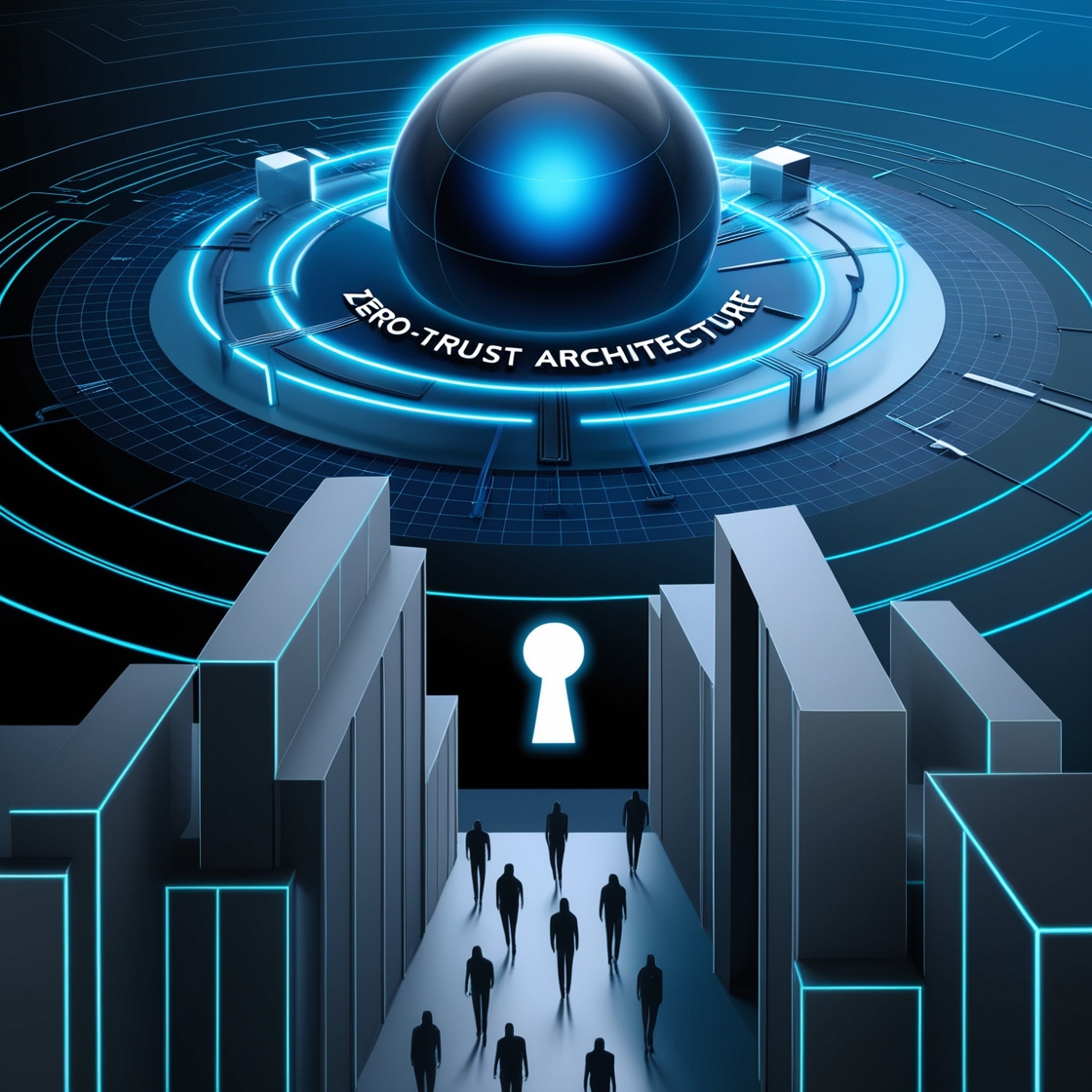In today’s digital age, where cyberattacks are more frequent and sophisticated, data privacy is a top concern for businesses and individuals alike. Protecting sensitive data requires robust security models, and this is where Zero-Trust Architecture (ZTA) comes into play. But what exactly is Zero-Trust, and why is it critical for ensuring data privacy?
This article explores the ins and outs of Zero-Trust Architecture, why it’s necessary for modern security systems, and how it helps safeguard data in an increasingly interconnected world.
Understanding Zero-Trust Architecture
Origins of the Zero-Trust Model
The Zero-Trust concept originated from the idea that no user or device, whether inside or outside the organization’s network, should be trusted by default. This stands in stark contrast to traditional security models, which operated under the assumption that users inside the network perimeter could be trusted, while outsiders could not.
Traditional Security Models vs. Zero-Trust
Traditional security models relied on a perimeter-based approach, like a castle with walls around it. Once inside, users had more or less free rein to move around. However, as IT environments evolved—especially with cloud computing and remote workforces—the boundaries became blurred, making this approach ineffective.
Zero-Trust takes a more granular approach, requiring verification at every step. No device, user, or application is trusted unless explicitly authenticated.
Core Principles of Zero-Trust
- Never trust, always verify: Assume that every request for access could be malicious and validate it.
- Least privilege access: Only grant access to the data or resources required for a task, minimizing potential attack surfaces.
- Continuous monitoring: Constantly assess activity to identify suspicious behavior.
Core Components of Zero-Trust Architecture
Identity Verification and Authentication
Every user and device must undergo rigorous authentication processes, such as multi-factor authentication (MFA), before accessing sensitive data. This ensures that only authorized individuals can enter the system.
Least Privilege Access
This principle limits the scope of what users can access, reducing potential damage if a credential is compromised. By enforcing strict controls, organizations ensure that users only access the information necessary for their roles.
Continuous Monitoring and Auditing
Zero-Trust involves continuous surveillance of network activities. Any unusual behavior, like accessing sensitive data at odd hours, can trigger alerts and responses to prevent unauthorized access.
Micro-Segmentation of Networks
Micro-segmentation divides networks into smaller, isolated zones. Each segment has its security controls, meaning even if one part is compromised, the rest of the network remains protected.
Encryption of Data
Data should be encrypted both at rest and in transit, making it unreadable to unauthorized users, even if intercepted.
Why Is Zero-Trust Necessary?
Rise of Cyberattacks and Data Breaches
The frequency and complexity of cyberattacks have skyrocketed. From phishing schemes to sophisticated ransomware attacks, malicious actors are constantly finding new ways to exploit weaknesses in traditional security models.
Growing Complexity of IT Infrastructures
Modern IT environments include a mix of on-premise systems, cloud-based platforms, and remote users, making it difficult to secure. Zero-Trust adapts to this complexity by providing a unified framework to manage security across diverse environments.
Increased Use of Cloud Services
As businesses shift to cloud-based applications, the traditional perimeter becomes irrelevant. Zero-Trust ensures that even cloud environments adhere to strict security protocols.
The Challenge of Remote Workforces
The rise of remote workforces introduces vulnerabilities, as employees connect from various locations and devices. Zero-Trust provides a framework to secure these connections without compromising productivity.
How Zero-Trust Enhances Data Privacy
Zero-Trust’s Role in Preventing Unauthorized Access
By requiring verification at every step, Zero-Trust prevents unauthorized access to sensitive data, protecting it from external and internal threats.
How It Ensures Compliance with Data Privacy Regulations
Data privacy regulations like GDPR, CCPA, and HIPAA mandate strict security measures. Zero-Trust helps organizations meet these compliance standards by ensuring robust data protection protocols.
Protecting Personal Data in the Digital Landscape
In a world where personal data is a valuable commodity, Zero-Trust helps protect individuals’ privacy by minimizing unauthorized access and reducing the risk of data breaches.
Implementing Zero-Trust in an Organization
Steps to Adopt a Zero-Trust Framework
Implementing Zero-Trust involves:
- Identifying sensitive data and assets.
- Setting up strict identity verification processes.
- Segmenting the network into smaller zones.
- Continuously monitoring network activities.
Key Technologies for Zero-Trust Implementation
- Multi-factor authentication (MFA)
- Identity and access management (IAM) systems
- Network segmentation tools
- Continuous monitoring software
Challenges in Deploying Zero-Trust
Implementing Zero-Trust can be complex, particularly for organizations with legacy systems or fragmented IT infrastructures. However, gradual implementation and planning can ease the transition.
Zero-Trust and Cloud Security
Managing Cloud Infrastructure with Zero-Trust
Cloud environments introduce new vulnerabilities, but Zero-Trust ensures that even in multi-cloud environments, access to data and applications is controlled and monitored.
Addressing Multi-Cloud Environments
Organizations using multiple cloud providers need consistent security policies across all platforms. Zero-Trust facilitates uniform security measures across different cloud environments.
Benefits of Zero-Trust in Cloud Computing
Zero-Trust provides enhanced visibility and control over who can access cloud-based resources, improving security and reducing risks.
Zero-Trust for Small and Large Businesses
Customizing Zero-Trust for SMEs
Small and medium-sized enterprises (SMEs) can implement scaled-down versions of Zero-Trust, ensuring security without overwhelming budgets or resources.
Scalable Solutions for Enterprise Organizations
Enterprises with vast infrastructures benefit from scalable Zero-Trust solutions that can grow with their business and IT demands.
Cost Considerations
While the initial setup of Zero-Trust might seem costly, the long-term savings from avoiding data breaches and compliance penalties make it a wise investment.
